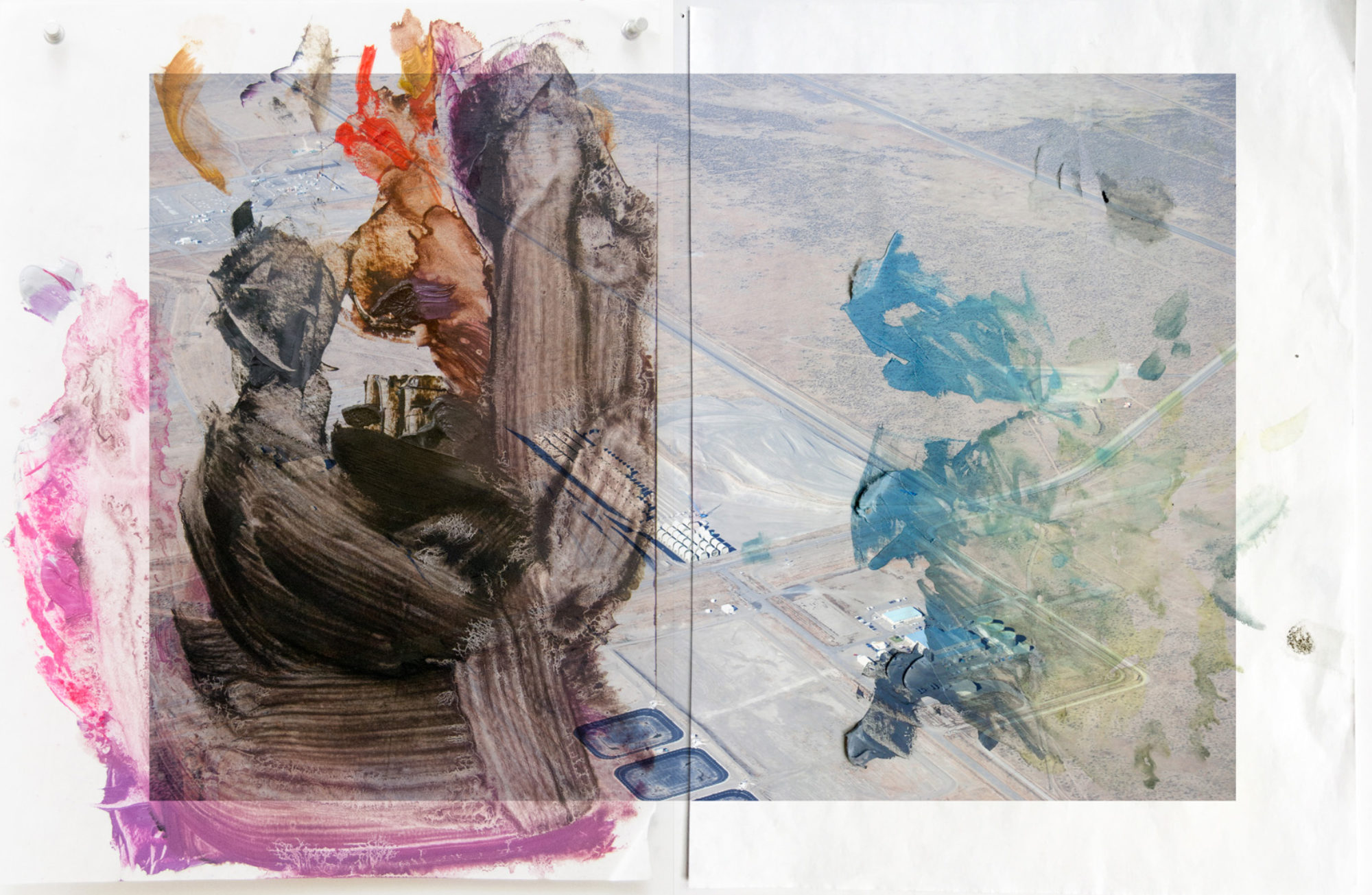“Pull with Flare & Rollback”
Polaroid 20×24 color positive negative prints, 60”x66”
Ellen Carey (b.1952 USA) is an educator, independent scholar, guest curator, photographer and lens-based artist, whose unique experimental work (1974-2017) spans several decades. Her early work Painted Self-Portraits (1978) were first exhibited at Hallwalls, an artists-run alternative space, home to the Buffalo avant-garde — Robert Longo and Cindy Sherman — and led to a group exhibit The Altered Photograph at PS 1, another avant-garde institution. The visionary curator, Linda Cathcart, of The Albright-Knox Art Gallery (AKAG) selected Carey’s work for this exhibition as well as The Heroic Figure which presented thirteen American artists for the São Paulo Biennale including Cindy Sherman, Nancy Dwyer, Julian Schnabel and David Salle, portraits by Robert Mapplethorpe; South/North American tour (1984-1986).
In 1983, The Polaroid Artists Support Program invited Carey to work at the Polaroid 20 X 24 Studio. Her Neo-Geo, post-psychedelic Self-Portraits (1984-88) were created, quickly followed by her stacked photo-installations Abstractions (1988-95). Her pioneering breakthrough the Pull (1996) and Rollback (1997) name her practice Photography Degree Zero (1996-2017). Here, she investigates minimal and abstract images with Polaroid instant technology partnered with her innovovative concepts, often using only light, photography’s indexical, or none, emphasizing zero. Her photogram work is cameraless; it parallels her Polaroid less-is-more aesthetic under her umbrella concept Struck by Light (1992-2017). Carey has worked in a variety of cameras and formats: Polaroid SX-70 and Polaroid PN film; black/white to color; 35mm, medium, and large format. Her experimental images, in a range of genres and themes, are one-of-a-kind.
Carey’s new series Caesura uses the photogram to introduce visual breaks in color; caesura is Greek or Latin for pause: in word (poetry) or sound (music). The images use color theory—RGBYMC—as palette and conceptual point-of-departure and light, photography’s indexical, as it blends, bends, and breaks across the paper. What remains are vertical bands in colors, dividing the rectangle in half, leaving white as the break or pause, in the composition; its “ caesura” or cut, dramatic black forms signal too much light, colors overlap as well.

